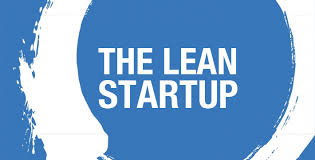Many innovators wouldn’t dream of launching a business without a plan and a pile of money, but that’s precisely the “lean startup” approach that advocates say is revolutionizing and democratizing entrepreneurship.
The methodology, introduced in 2011 by serial entrepreneur and startup coach Eric Ries, shuffles the traditional deck by putting the cart (the product or service idea) before the horse (the business organization), “selling” the wares before investing time and money building something that customers don’t really want.
If it sounds counterintuitive, it’s because the conventional business development template begins with a business plan, followed by a search for financial backing and recruitment of a core management team. After months or years spent quietly developing and building the product, the creation is introduced to consumers through advertising and marketing.
 But many businesses fail after all this investment in product development and capital expenditure because people just don’t want the product being offered.
But many businesses fail after all this investment in product development and capital expenditure because people just don’t want the product being offered.
The lean startup path seeks to avoid such waste of time and money by “selling” products before building them.
Feedback First
Most business models are based on speculation about what customers want, said Kathleen Gardenswartz, director of marketing at ABQid, a nonprofit business accelerator funded by the city of Albuquerque. Lean startup aims to eliminate that guesswork by jumping directly to the test-market phase, putting products and ideas immediately before customers to get their reactions in the same way a researcher tests a hypothesis before reaching a scientific conclusion.
From there, the entrepreneur builds a minimum viable product with just enough features to make it marketable. The feedback continues in a “build, measure, learn” loop that tells the entrepreneur whether to abandon the product, redesign it or pivot in an entirely new direction.
Using this dynamic, flexible method, costly product development cycles shrink and companies get off the ground quickly and relatively inexpensively by getting in sync with what customers want right from the start. And they stay attuned by continuing to solicit input.
Learning Curve
Gardenswartz offered the example of Itsums, a company launched by Albuquerque resident Carrie Wiggins based on software she created that allows planners to instantly know what a home-improvement project will cost. Wiggins ran the idea past an interior designer and a national furniture retailer, and both encouraged her to develop an online tool for professionals and do-it-yourselfers.
Unlike many of ABQid’s clients, Wiggins had money and a team to help with her startup, which went live during her three-month intensive at the accelerator. The typical client is less prepared: Some have only a rough idea of what they want to build, while others need help moving forward with an existing business or product idea.
ABQid’s mission is to help beginning and experienced entrepreneurs learn about lean startup and put those ideas into practice. The organization sponsored a “women’s entrepreneurial boot camp” in February and hosts free office hours every Wednesday from 3 to 5 p.m. at 317 Commercial St. N.E. for anyone with an idea or invention they want to discuss with expert mentors.
More information is available at http://www.abqid.com.
Download 397_Lean Startup Turns Traditional Business Model on its Head PDF

